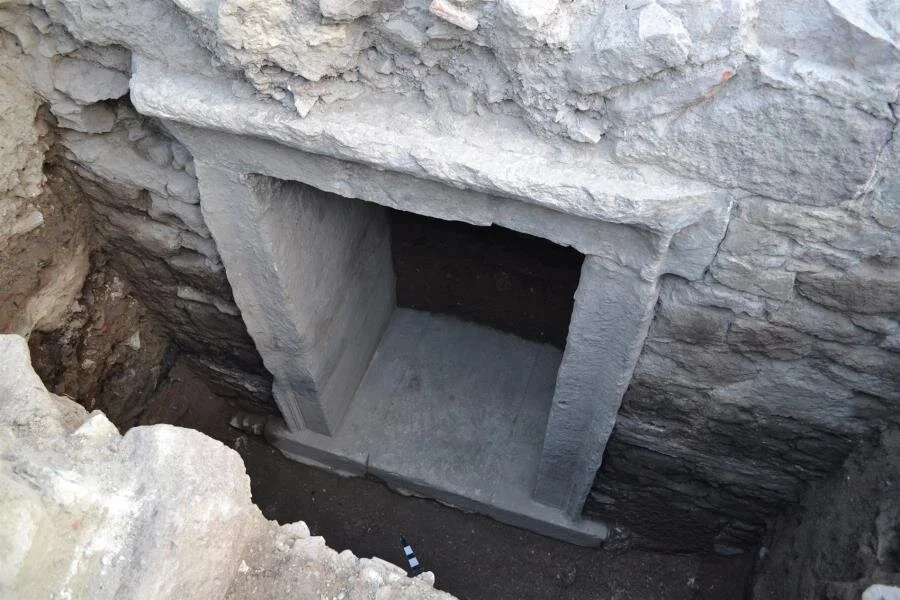An Ottoman bath, which is the oldest found in the town of Mytilene and which was probably sponsored by the pirate Haireddin Barbarossa (who was originally from Lesbos), is the new great find of the local Ephorate of Antiquities and the curator Pavlos Triantaphyllides.
It is a key, as it could lead to the traces of the Byzantine settlement, the location of which has been studied by scholars for decades. Quite by chance, because a majestic marble gate from the 6th or 7th century AD was found under part of its foundations.
The new archaeological data for the topography of the Medieval Castle of Mytilene, the most emblematic monument of the city of Mytilene, was uncovered during the implementation of the project "Promoting and improving the visitability of the Lower Castle of Mytilene".
The Director of the Ephorate of Antiquities, Pavlos Triantaphyllides, a devoted and tireless archaeologist, says that the Upper Castle of Mytilene was formed and emerged during the early Ottoman period. Due to the Russian-Turkish wars and conflicts with the Venetians, they decided to expand it and reinforce an area downwards. According to Mr. Triantaphyllides, there is probably a part of the wall of the Hellenistic port in this place.
Until now, there was a gap in research about the lower wall and the Byzantine quarter. The bath was found as part of the project to clean and shape the moat in order to build drainage networks for the water that was draining with difficulty through the castle. It is the earliest Ottoman bath and dates from the 16th century. It was probably donated by Barbarossa. Next door is another bath from the 17th century.
After the 16th century bath was found, it was properly excavated. On the west side and under the foundation, a marble gate from the end of the 6th century was excavated, a sign that we have located an early Byzantine phase of the city with a fortification. The gate has an overall height of 3.20 m., a width of 2.05 m. and a depth of 2.00 m.
The Byzantine settlement was destroyed by the Ottomans during the conquest of the island in 1462.
Considering that from the Byzantine period in the castle of Mytilene today only the eastern wall of the Akropyrgos, the Byzantine gate in the northeastern wall and the entrance of the tank have survived, the recently unveiled marble gate can be considered a find of special significance and architecture of the castle of this period as well as for the history of the city of Mytilene.
Archaeologists conclude that the configurations already took place in the first phase of Ano Kastro. Probably connected to this early Byzantine gate is the previously unknown archaeologically excavated Byzantine settlement of Melanoudi, which is located by many researchers in the area of the Lower Castle of Mytilene.
The 16th century Ottoman bath is in contact with the medieval wall. This is the earliest bath found on Lesvos, which retains the vaulted areas of the hot, lukewarm and cold baths.











